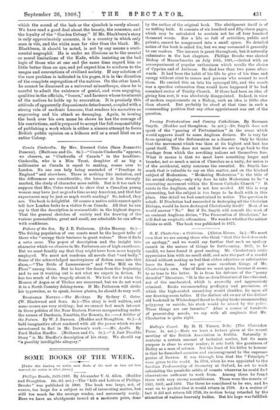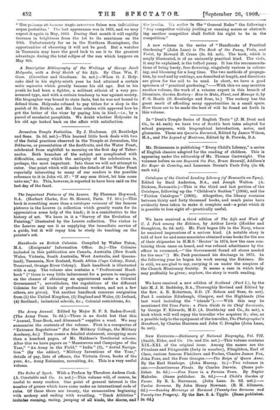Halley's Comet. By H. H. Turner, D.Sc. (Tho Clarendon Press.
Is. not.)—Here we have a lecture given at the recent meeting of the British Association in Dublin. Naturally it contains a certain amount of technical matter, but its main purpose is clear to every reader; it sots forth the greatness,of Halley as a man of science. Not the.least of his titles to honour is that he furnished occasion and encouragement to the supremo genius of Newton. It was through him that the " Principle were given to the world. In 1704, when he was appointed to the Savilian Professorship of Geometry at Oxford, he set to work calculating the parabolic orbits of comets wherever he could find observations sufficient to work from. Among these he found three with very strong resemblances. These were the comets of 1531, 1607, and 1682. The three he considered to be one, and, he went on to predict that it would return in 1768. As a matter of fact it did not return till 1759, its motion being retarded by the attraction of various heavenly bodies. But his hope was fulfilled. "Hoe primum ab homine Anglo inventnm fnisse non infitiabitur sepia posteritas. "The last appearance was in 1835, and we may expect it again in May, 1910. During that month it will rapidly increase in brightness from the 1st to its maximum on the 10th. Unfortunately for us in the Northern Hemisphere, the opportunities of observing it will not be good. But a watcher in Tasmania may have the good luck to see it to the greatest advantage during the total eclipse of the sun which happens on May 8th.











































 Previous page
Previous page